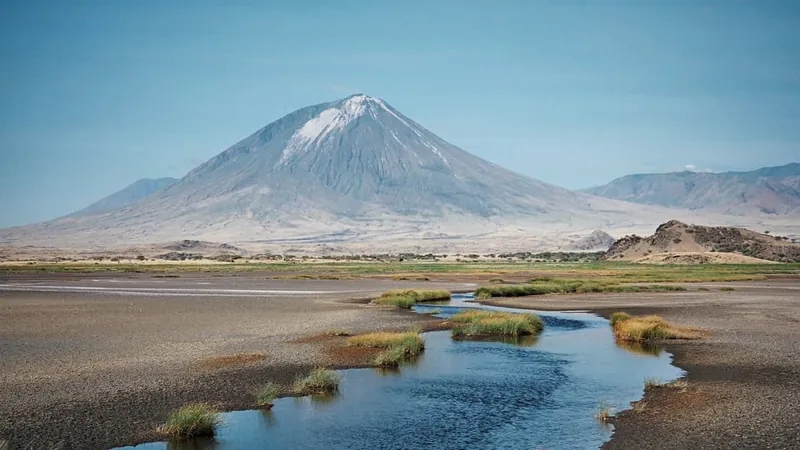
Scientists Unearth Gripping Signs of Imminent Eruption at Tanzania's 'Mountain of God' Volcano!
2024-09-17
Imminent Eruption Signs at Ol Doinyo Lengai
In a shocking development, scientists have spotted a sudden and alarming bulge in the renowned Ol Doinyo Lengai volcano, dubbed the 'Mountain of God.' This phenomenon suggests a potential eruption could be on the horizon, prompting warnings for nearby residents to brace for impact.
Historical Context
Located in northern Tanzania, the towering Ol Doinyo Lengai stands at 9,718 feet and has a notorious history of eruptive activity, with past eruptions occurring roughly every two to 40 years. Notably, its last eruption in 2007 released significant ash clouds that spread over ten miles, forcing the evacuation of thousands of people from surrounding areas.
Signs of Increased Activity
Since March 2022, there has been a marked increase in volcanic activity, with scientists noting a rapid uplift in the underground magma—a warning signal that could indicate an impending disaster. “The detection of transient motion in volcanic activity is a crucial precursor to any eruption,” shared Ntambila Daud, a graduate student at Virginia Tech who is involved in the ongoing research.
Cultural Significance
The Ol Doinyo Lengai, translating to 'Mountain of God' in the Maasai language, is not just a geological marvel but holds deep cultural significance. The Maasai tribe venerates the volcano as a sacred site, often petitioning it to heal maladies and grant fertility. The volcano has erupted nine times since records began in the 1880s, with its last major explosion occurring 17 years ago when ash reached thousands of feet into the sky and lava spewed nearly two miles away.
Unique Volcanic Activity
Remarkably, Ol Doinyo Lengai is the world’s only volcano known to emit carbonatite lava, which exhibits a striking transformation from a dark gray or black hue to stark white upon cooling. This unique characteristic fascinates researchers and geologists alike.
Research Implications
Virginia Tech associate professor D. Sarah Stamps highlighted the importance of their research, stating, “Our methodology has propelled our understanding of the complex magma plumbing system beneath Ol Doinyo Lengai.” This knowledge is not merely academic; it holds practical implications for Tanzanian authorities that can enhance their preparedness and response strategies in the face of potential volcanic threats.
Conclusion
As the situation develops, one thing is clear: the world will be watching as scientists continue to monitor this volatile landscape, delving deeper into the mysteries of Ol Doinyo Lengai and its sacred significance to the Maasai people.
Stay tuned for updates on this developing story—could we be on the brink of witnessing one of nature’s awe-inspiring spectacles?





 Brasil (PT)
Brasil (PT)
 Canada (EN)
Canada (EN)
 Chile (ES)
Chile (ES)
 España (ES)
España (ES)
 France (FR)
France (FR)
 Hong Kong (EN)
Hong Kong (EN)
 Italia (IT)
Italia (IT)
 日本 (JA)
日本 (JA)
 Magyarország (HU)
Magyarország (HU)
 Norge (NO)
Norge (NO)
 Polska (PL)
Polska (PL)
 Schweiz (DE)
Schweiz (DE)
 Singapore (EN)
Singapore (EN)
 Sverige (SV)
Sverige (SV)
 Suomi (FI)
Suomi (FI)
 Türkiye (TR)
Türkiye (TR)